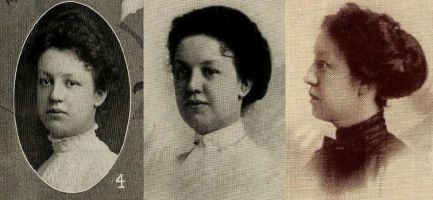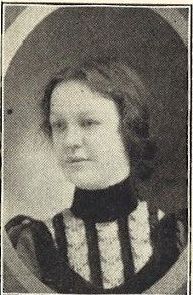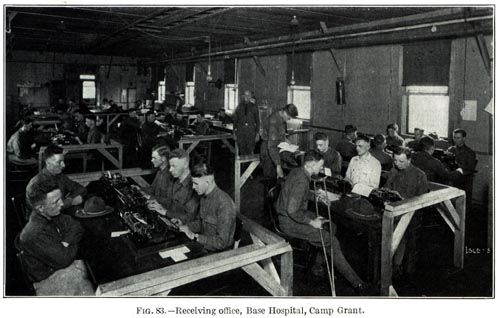
| 28 October 1884 - 10 June 1953 |
|
II. For every child understanding and the guarding
of his personality as his most precious right III. For every child a home and that love and
security which a home provides; and for that child who must receive foster
care, the nearest substitute for his own home IV. For every child full preparation for his
birth, his mother receiving prenatal, natal, and postnatal care; and the
establishment of such protective measures as will make child-bearing safer V. For every child health protection from birth
through adolescence, including: periodical health examinations and, where
needed, care of specialists and hospital treatment; regular dental examination
and care of the teeth; protective and preventive measures against communicable
diseases; the insuring of pure food, pure milk, and pure water VI. For every child from birth through
adolescence, promotion of health, including health instruction and a health
program, wholesome physical and mental recreation, with teachers and leaders
adequately trained VII. For every child a dwelling place safe,
sanitary, and wholesome, with reasonable provisions for privacy, free from
conditions which tend to thwart his development; and a home environment
harmonious and enriching VIII. For every child a school which is safe from hazards,
sanitary, properly equipped, lighted, and ventilated. For younger children
nursery schools and kindergartens to supplement home care IX. For every child a community which recognizes
and plans for his needs, protects him against physical dangers, moral hazards,
and disease; provides him with safe and wholesome places for play and
recreation; and makes provision for his cultural and social needs X. For every child an education which, through
the discovery and development of his individual abilities, prepares him for
life; and through training and vocational guidance prepares him for a living
which will yield him the maximum of satisfaction XI. For every child such teaching and training
as will prepare him for successful parenthood, homemaking, and the rights of citizenship
; and, for parents, supplementary training to fit them to deal wisely with the
problems of parenthood XII. For every
child education for safety and protection against accidents to which modern
conditions subject him--those to which he is directly exposed and those which,
through loss or maiming of his parents, affect him indirectly XIII. For every
child who is blind, deaf, crippled, or otherwise physically handicapped, and
for the child who is mentally handicapped, such measures as will early discover
and diagnose his handicap, provide care and treatment, and so train him that he
may become an asset to society rather than a liability. Expenses of these
services should be borne publicly where they cannot be privately met XIV. For every
child who is in conflict with society the right to be dealt with intelligently
as society's charge, not society's outcast ; with the home, the school, the
church, the court and the institution when needed, shaped to return him whenever
possible to the normal stream of life XV. For every child the right to grow up in a
family with an adequate standard of living and the security of a stable income
as the surest safeguard against social handicaps XVI. For every
child protection against labor that stunts growth, either physical or mental,
that limits education, that deprives children of the right of comradeship, of
play, and of joy XVII. For every
rural child as satisfactory schooling and health services as for the city child,
and an extension to rural families of social, recreational, and cultural
facilities XVIII. To
supplement the home and the school in the training of youth, and to return to
them those interests of which modern life tends to cheat children, every stimulation
and encouragement should be given to the extension and development of the
voluntary youth organizations XIX. To make
everywhere available these minimum protections of the health and welfare of
children, there should be a district, county, or community organization for
health, education, and welfare, with full-time officials, coordinating with a
state-wide program which will be responsive to a nation-wide service of general
information, statistics, and scientific research. This should include: (a) Trained, full-time public
health officials, with public health nurses, sanitary inspection, and
laboratory workers (b) Available hospital beds (c) Full-time public welfare service for the relief,
aid, and guidance of children in special need due to poverty, misfortune, or
behavior difficulties, and for the protection of children from abuse, neglect,
exploitation, or moral hazard |
|
After her father passed away in 1935,
Mabel returned to school and finished her education with a Master’s Degree in
Public Health which she obtained from the University of Michigan in 1938. She also completed a Public Health Nursing
Certificate the same year. Today’s
School of Public Health at the University of Michigan was established in 1941,
but there were various pioneering programs related to public health offered at
U. of M. beginning as long ago as 1887.
The Public Health Nursing Certificate alone required Mabel to complete 45
credit hours of class work along with fifteen hours of practical field
work. Masters programs in Public Health
were tailored to the individual at the time Mabel completed her course work, so
her exact curriculum was not found. She
does have a published Thesis in the Bentley Historical Library at the
University of Michigan. During her
career Mabel worked in Public Health specializing in the area of Maternal and
Child Health. Clearly from the time that
Mabel began her first position in teaching, children were a priority for
her. Although she never married, nor did
she have children of her own, she provided education and nursing care for
several communities of youngsters throughout her working life. |
During
her adult life, the census records list her as having residences not only in
Peru and South Bend, Indiana, but also in Three Rivers, Michigan and St Joseph,
Missouri, and she was involved in work responsibilities in Lansing,
Michigan. In the fall of 1952, at the
age of 67, Mabel, her sister Martha, and her brother Colin, returned from a
trip to Europe. It is likely Mabel desired
to see once again where she had served as a young woman during The Great War,
for the following June, Mabel passed away from colorectal cancer with liver
metastasis. Her body was returned to
Peru, Indiana for burial in Mount Hope Cemetery. Clearly, for all the communities she served throughout
her life, she continued to remember Miami County and considered it home. Peru was where Mabel came to value the
promise of the youth of the United States.
Furthermore, she found her call to nursing while becoming a young woman
in Miami County, Indiana.
Researched, written & submitted by Mary Rohrer Dexter |
|
Works Cited “1901, 1908, 1909. 1911.” Peru High School Narcissus. High school Year book. Student photos
1901. Faculty Pictures years 1908, 1909,
and 1911 Angela Malavolti and Dave ShultzRegister Star Media.
“Much of Camp Grant's History Can Still Be Seen Today.” Rockford Register Star, Rockford Register Star, 23 May 2014. BHL: School of
Public Health (University of Michigan) Records, “Camp Grant & WWI.” McHenry County Historical Society and Museum. “Camp Grant (Illinois).” Wikipedia, Wikimedia Foundation, 1 Dec. 2017. “Camp Grant Museum.” Camp Grant Museum. Certificate of
Death. Indiana State Board of
Health. Mabel Munro Death Certificate. City Directory
Peru, Indiana 1919. City Directory
South Bend. 1938. “Death of Mrs J.P. Munro.” Peru Republican, 5 Oct. 1928. “Death-Funeral John P Munro.” Peru Daily Tribune, 26 Oct. 1935. Duffy, Lucy DeVries. “Stories of World War 1 in
France/La Grande Guerre.” The Fiftieth
Anniversary of the Armistice, A Testimony from Beyond the Atlantic by Rebecca
Goethe DeVries, 1 Jan. 1970. “Former Peru Woman Succumbs at Hospital.” Pharos-Tribune, 12 June 1953, pp. 10–10. Gjenvick, Paul K. “Camp Grant - The Mess and Birds Eye
Views - WW1 Cantonment - 1917.” Camp
Grant Mess and Other Camp Buildings | GG Archives, Gjenvick, Paul K. “Camp Grant Pictorial History
Brochure (1917).” Pictorial History of
Camp Grant | GG Archives,. Hallett, Christine. “Nurse Writers of the Great War.” Project MUSE, Manchester University
Press. “Herbert Hoover: Message Endorsing the Children's
Charter. - April 7, 1931.” The American
Presidency Project,. “Indiana Nurses At Camp Grant.” The Indianapolis Star, 17 Mar. 1918, pp. 13–13. “Mabel Gray Munro Dies.” The Kokomo Tribune, 12 June 1953, pp. 17–17. Mesves Hospital
Center France A.E.F., WW1,
freepages.genealogy.rootsweb.ancestry.com/~gregkrenzelok/mesveshospitalcenter.html. “Miss Mabel G Munro - Retired Public Health Nurse
Dies.” Peru Republican, 19 June 1953,
pp. 6–6. “Miss Monroe in England.” Unknown Paper, 28 Sept. 1918. “Nevers, France.” AccuWeather. “New Nurse Head.” Indianapolis
Star, 25 Oct. 1924, pp. 24–24. "New York, New York Passenger and Crew Lists,
1909, 1925-1957," database with images, FamilySearch
(https://familysearch.org/ark:/61903/1:1:2HMK-GN1 : 2 October 2015), Mabel G
Munro, 1952; citing Immigration, New York City, New York, United States, NARA
microfilm publication T715 (Washington, D.C.: National Archives and Records
Administration, n.d.). Source Citation Year: 1940; Census Place: South Bend,
St Joseph, Indiana; Roll: T627_1133; Page: 64A; Enumeration District: 97-4. "United States Census, 1910," database with
images, FamilySearch (https://familysearch.org/ark:/61903/1:1:MK53-8FZ :
accessed 14 September 2017), Mable Monroe in household of John P Monroe,
Ridgeview, Miami, Indiana, United States; citing enumeration district (ED) ED
123, sheet 3B, family 62, NARA microfilm publication T624 (Washington D.C.:
National Archives and Records Administration, 1982), roll 371; FHL microfilm
1,374,384. "United States Census, 1920," database with
images, FamilySearch (https://familysearch.org/ark:/61903/1:1:MF7T-R7Y :
accessed 14 September 2017), Mabel G Monroe in household of John P Monroe,
Peru, Miami, Indiana, United States; citing ED 145, sheet 2A, line 44, family
41, NARA microfilm publication T625 (Washington D.C.: National Archives and
Records Administration, 1992), roll 441; FHL microfilm 1,820,441. "United States Census, 1930," database with
images, FamilySearch (https://familysearch.org/ark:/61903/1:1:X4BD-Z5N :
accessed 27 November 2017), Mabel G Munroe, South Bend, St Joseph, Indiana,
United States; citing enumeration district (ED) ED 11, sheet 24B, line 90,
family 783, NARA microfilm publication T626 (Washington D.C.: National Archives
and Records Administration, 2002), roll 625; FHL microfilm 2,340,360. “University of Michigan Bulletin of General
Information.” University of Michigan
Bulletin of General Information, The University, pp. 70–73. Part 1.
1937-1938 and 1938-1939 Wallin, C H. “Indiana Nurses At Camp Grant.” Indianpolis Star, 17 Mar. 1918, pp.
13–13. Waters, / Between The. “American Women in the Great
War.” Making History Together, 16
July 2016. Women Nurses
Throughout War History. Year: 1940; Census Place: Three Rivers, St Joseph,
Michigan; Roll: T627_1817; Page: 81A; Enumeration District: 75-27. |
Comments,
submissions and communications may be sent to doughboy@miamicountyinworthremembering.org
|
 |
 |
 |
 |



